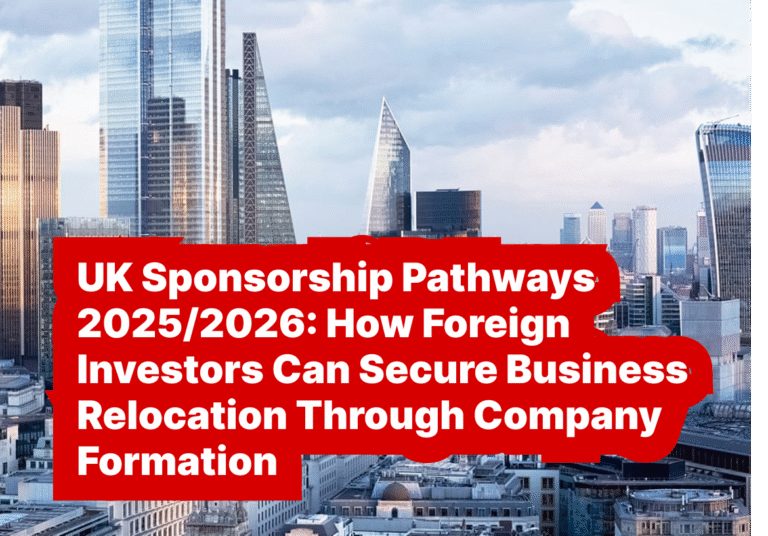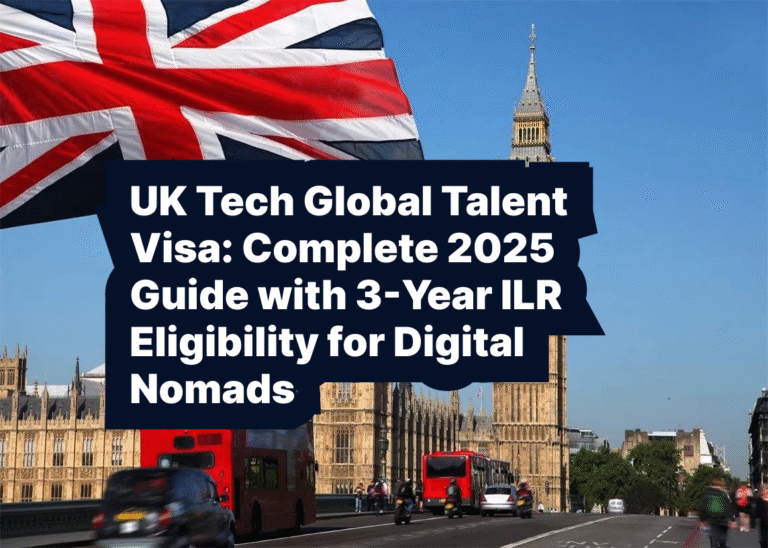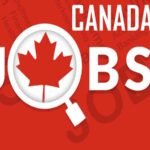The United States of America, a global epicenter of innovation, technology, and economic opportunity, continues to attract ambitious professionals from every corner of the world. For skilled foreign nationals, securing a work visa is the essential key to unlocking a fulfilling career and a new life in this diverse country. In 2025, the U.S. job market, particularly in high-demand sectors like technology, healthcare, and engineering, is projected to have over 100,000 open positions that are eligible for visa sponsorship. This significant number represents a vast landscape of opportunities for those with the right skills and a strategic approach.
This article is a comprehensive, in-depth guide designed to provide you with a clear roadmap for navigating the complex U.S. work visa system. We’ll delve into the various visa categories, provide a detailed, step-by-step guide on how to apply, offer critical tips for success, and give you a practical blueprint for settling in as a new immigrant. From understanding the nuances of U.S. immigration law to the practicalities of daily life, this guide will prepare you to confidently embark on your journey to a prosperous career in the United States.
Understanding the U.S. Work Visa Landscape
The U.S. immigration system is multifaceted, offering different visa categories to meet various needs, from temporary employment to long-term residency. Choosing the right visa is the first and most crucial step in your journey.
The H-1B Visa: The Lottery-Based Pathway
The H-1B visa is the most well-known non-immigrant work visa for foreign professionals. It is designed for individuals in a “specialty occupation,” which is a field that requires a bachelor’s degree or its equivalent. This visa is the primary route for professionals in IT, engineering, finance, and many other fields. The U.S. government sets an annual cap of 85,000 new H-1B visas each fiscal year, which includes 65,000 for the general category and an additional 20,000 for those with a U.S. master’s degree or higher. Due to overwhelming demand, the H-1B visa is allocated through an annual lottery.
The H-1B lottery is an electronic registration process where employers submit a digital registration on behalf of each prospective employee. The registration period for the FY 2026 H-1B lottery is set to open in March 2025. A new system gives each individual applicant an equal chance of selection, regardless of how many employers register on their behalf. This change, which began with the FY 2025 lottery, has made the process fairer and more transparent.
It is important to note that many jobs are “cap-exempt,” meaning they are not subject to the H-1B lottery. These positions are primarily at:
- Institutions of higher education (universities and colleges).
- Non-profit research organizations.
- Government research organizations.
These employers can file H-1B petitions at any time of the year, providing a significant alternative for those who miss the annual lottery.
The L-1 Visa: For Intra-Company Transfers
The L-1 visa is an excellent option for employees of multinational companies. It allows a company to transfer a manager, executive, or an employee with “specialized knowledge” from a foreign office to a U.S. office. The L-1 visa is not subject to an annual cap, which makes it a highly desirable and reliable option.
There are two main types of L-1 visas:
- L-1A (Managers and Executives): For individuals in a managerial or executive role. This visa allows for a stay of up to seven years and offers a direct pathway to a green card.
- L-1B (Specialized Knowledge): For individuals with specialized knowledge of the company’s products, services, processes, or procedures. This visa allows for a stay of up to five years.
To be eligible for an L-1 visa, the employee must have worked for the foreign company for at least one year continuously within the three years immediately preceding their visa application.
The O-1 Visa: For Individuals of Extraordinary Ability
The O-1 visa is for individuals who have demonstrated extraordinary ability in the sciences, arts, education, business, or athletics. This visa is ideal for top-tier professionals who have achieved national or international acclaim in their field. The O-1 visa does not have an annual cap and can be obtained for a period of up to three years, with unlimited extensions.
The eligibility requirements for an O-1 visa are very high and require extensive documentation, such as:
- Proof of major awards or prizes.
- Membership in associations that require outstanding achievements.
- Published material about your work in professional publications.
- Evidence of a high salary or other significant remuneration.
Other Key Visas
The U.S. offers other specific visa categories, each tailored to a particular need:
- E-3 Visa: A specialty occupation visa exclusively for Australian citizens. It is similar to the H-1B visa but is not subject to a lottery.
- TN Visa: A visa for Canadian and Mexican professionals working in certain occupations as part of the United States-Mexico-Canada Agreement (USMCA). It is a relatively quick and straightforward visa process.
High-Demand Industries and Job Roles
The 100,000+ open positions with visa sponsorship are not spread evenly across all industries. They are concentrated in sectors facing acute talent shortages, where U.S. employers are actively seeking global professionals to fill critical roles.
Information Technology (IT)
The U.S. tech sector is a global powerhouse, and its relentless pace of innovation has created a constant demand for skilled professionals. This industry remains the undisputed leader in H-1B visa petitions.
- In-Demand Roles: Software Engineers, DevOps Engineers, Data Scientists, Cybersecurity Analysts, and Cloud Architects. These roles are critical for developing new products, managing vast amounts of data, and protecting digital infrastructure.
- Salaries: Salaries in the tech sector are among the highest in the U.S., with experienced professionals in major tech hubs like Silicon Valley, New York, and Seattle easily earning six-figure salaries.
Healthcare and Medical
The U.S. healthcare system faces a persistent shortage of qualified medical professionals. This demand is driven by an aging population and a growing need for specialized care.
- In-Demand Roles: Registered Nurses (RNs), Physical Therapists, Physicians, and Medical Technologists. Many of these roles are on shortage lists and are often sponsored by hospitals, clinics, and long-term care facilities.
- Visa Sponsorship: The healthcare sector is one of the most reliable sources of visa sponsorship, particularly for highly skilled and certified professionals.
Engineering and Manufacturing
The U.S. manufacturing sector is undergoing a revitalisation, with a strong focus on automation, robotics, and advanced materials. This has created a significant need for skilled engineers.
- In-Demand Roles: Mechanical Engineers, Electrical Engineers, Civil Engineers, and Mechatronics Engineers. These professionals are vital for designing new products, maintaining complex machinery, and managing large-scale infrastructure projects.
- Sponsorship: Many large corporations in the automotive, aerospace, and energy sectors have well-established visa sponsorship programs.
Finance and Business
The U.S. financial services industry, from Wall Street to fintech startups, requires a continuous influx of skilled professionals to manage risk, analyze markets, and develop new financial products.
- In-Demand Roles: Financial Analysts, Data Analysts, Accountants, and Project Managers.
- Sponsorship: Major banks, investment firms, and consulting companies are frequent sponsors of H-1B and L-1 visas for top talent.
A Step-by-Step Guide to Applying
The process of obtaining a U.S. work visa is typically employer-led. Your role is to secure a job offer from an employer willing to sponsor you and to provide all the necessary documentation.
Step 1: Skills and Resume Preparation
Before you even begin your job search, you must prepare your professional profile to meet U.S. standards.
- The U.S. Resume: Unlike many other countries, a U.S. resume is typically concise, usually one to two pages. It should be achievement-oriented, focusing on quantifiable results. For example, instead of “Managed a team of developers,” state “Led a team of five developers to reduce project completion time by 15%.”
- Professional Credentials: Ensure your educational qualifications are clearly articulated. If your degree is from a foreign university, be prepared to have it evaluated by a credential evaluation service to prove its U.S. equivalent.
- LinkedIn Profile: Your LinkedIn profile is your professional brand in the U.S. It should be up-to-date, professional, and showcase your skills, experience, and network.
Step 2: The Job Search and Securing Sponsorship
- Target Sponsoring Companies: Not all U.S. companies sponsor visas. You need to focus your search on those that do. Use online platforms that track visa sponsorships. Large multinational corporations and tech companies are often the best places to start.
- Networking: Networking is a cornerstone of the U.S. job market. Use platforms like LinkedIn to connect with recruiters and hiring managers in your target industry. Attending virtual career fairs and industry-specific webinars can also help you make valuable connections.
- The Job Offer: When you get a job offer, ensure that the employer is aware of your need for visa sponsorship. The job offer letter should clearly state the salary, job title, and start date.
Step 3: The Visa Petition (Form I-129)
This is the employer-led phase of the process. Your employer, or their immigration attorney, will file the necessary petition with U.S. Citizenship and Immigration Services (USCIS) on your behalf.
- H-1B Petition: For H-1B visas, the employer must first submit your registration in the annual lottery. If you are selected, they will then file Form I-129, Petition for a Nonimmigrant Worker, along with the approved Labor Condition Application (LCA) from the Department of Labor.
- L-1/O-1 Petition: For other visas like the L-1 or O-1, the employer files Form I-129 directly with USCIS without a lottery. They will need to provide extensive documentation proving your eligibility for the visa.
Step 4: The Consular Interview (if abroad)
After the USCIS approves your petition, you will attend a visa interview at a U.S. embassy or consulate in your home country.
- Preparation: Prepare for your interview by reviewing your visa petition and your job offer letter. Be ready to answer questions about your educational background, your work experience, your reasons for wanting to work in the U.S., and your employer.
- Documentation: Bring all required documents, including your passport, the Form DS-160 confirmation page, and your approved I-797 (Notice of Action) from USCIS.
A Comparison of Key U.S. Work Visas
The following table provides a clear overview of the most common work visa options for foreign professionals in 2025.
| Visa Type | Purpose | Key Requirements | Advantages | Pathway to Green Card |
| H-1B | Temporary work in a “specialty occupation.” | Bachelor’s degree; job offer in a specialty occupation; employer files petition. | Allows for dual intent (can seek a green card); spouse can get a work permit. | Yes, a very common pathway. |
| L-1A/L-1B | Transfer of an employee within a multinational company. | One year of continuous work for the foreign company; managerial or specialized knowledge. | No annual cap; expedited processing available; L-1A leads to a green card. | Yes, a direct and common pathway for L-1A. |
| O-1 | For extraordinary ability in a specific field. | National or international acclaim; extensive evidence of achievements. | No annual cap; not tied to a specific employer’s petition in all cases. | Yes, a direct pathway. |
| E-3 | Specialty occupation for Australian nationals. | Bachelor’s degree; job offer in a specialty occupation. | No lottery; streamlined application process. | No, but can be renewed indefinitely. |
| TN | For Canadian and Mexican professionals. | Specific profession listed under USMCA; job offer from a U.S. employer. | No annual cap; quick and simple application at a port of entry. | No, not a direct pathway. |
Tips for a Successful Transition
Beyond the legal and administrative steps, a successful move to the U.S. requires a readiness to adapt to a new country and a new way of life.
Mastering the U.S. Workplace Culture
- Communication: U.S. workplace culture is often direct and transparent. It is common for employees to voice their opinions and ask questions in meetings. Hierarchy is often less rigid than in other countries.
- Professionalism: Punctuality, a strong work ethic, and a positive, can-do attitude are highly valued.
- Work-Life Balance: The concept of work-life balance is a key part of the U.S. workplace, but it can vary by company and industry.
- Networking: Professional networking is a cornerstone of career growth in the U.S. Use platforms like LinkedIn to connect with recruiters and professionals in your industry. Attending virtual career fairs and industry-specific events can also help you make valuable connections.
Financial Preparation
Understanding the U.S. financial system is a crucial part of your transition.
- Salary and Taxes: U.S. salaries are often quoted on an annual or hourly basis before taxes. Be aware of federal, state, and local taxes, which can be significant.
- Cost of Living: The cost of living varies dramatically across the U.S. Research the cost of housing, transportation, and groceries in your destination city.
Settling in as an Immigrant in the USA
Your journey doesn’t end with your visa. A smooth transition requires you to take a number of important steps after you arrive.
The First 30 Days: Your Essential To-Do List
- Social Security Number (SSN): This is a critical nine-digit number used for employment, banking, and government services. You can apply for an SSN at a Social Security Administration office after you arrive.
- Open a Bank Account: Opening a U.S. bank account is essential for receiving your salary and managing your finances. You will need your passport, your work visa, and your SSN.
- Driver’s License: A U.S. driver’s license is a primary form of identification and is necessary for driving. You will need to take a written test and a practical driving test to obtain one.
- Housing: Finding a place to live is a top priority. Websites and rental agencies can help you find an apartment. Be sure to understand your lease agreement, as they can be complex.
Healthcare and Social Security
The U.S. healthcare system can be complex. Your employer will likely offer health insurance as part of your benefits package. It is crucial to understand the different types of plans, as well as concepts like co-pays and deductibles. Your employer will also deduct contributions for Social Security and Medicare from your paycheck, which will go toward your future retirement and healthcare benefits.
Cultural and Social Integration
- Building a Community: The U.S. is a very diverse country. Don’t be afraid to get involved in local community groups, volunteer, or join sports teams to meet new people and build a support network.
- Embracing New Experiences: The U.S. offers a wide range of cultural and social experiences. Exploring the country’s diverse landscapes, attending local festivals, and trying different cuisines will help you feel more at home.
- Understanding Social Norms: Be aware of social norms, such as tipping at restaurants and the importance of personal space.
Conclusion
Securing a work visa in the United States in 2025 is a goal well within reach for qualified professionals. The country’s strong economy and the government’s focus on attracting skilled talent create a clear and achievable pathway to a fulfilling career and a prosperous new life. The journey requires meticulous planning, from securing a skills assessment to a proactive job search and cultural adaptation. By understanding the intricacies of the U.S. visa system and embracing the opportunities in its diverse landscape, you can unlock a world of possibilities for yourself and your family. The journey to the U.S. is an investment in your future, offering not only a dynamic professional environment but also a high standard of living, a comprehensive safety net, and a welcoming community that values hard work and contribution.







